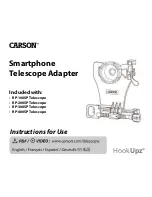
LGE Internal Use Only
Copyright © 2007 LG Electronics. Inc. All right reserved.
Only for training and service purposes
Separate GPS and UMTS down-converters exist within the RFR6275 to allow GPS signals to be
processed independently of UMTS signals. The inputs use differential configurations to improve
second-order intermodulation and common-mode rejection performance. The differential input gain
stage implements MSM IC-controlled gain adjustments to extend receiver dynamic range. The outputs
of the differential amplifiers drive the RF port of the quadrature RF-to-baseband down-converters. The
down-converters are routed to low-pass filters (one I and one Q) whose pass-band and stop-band
characteristics supplement MSM device processing. These filter circuits allow for DC offset correction
and the differential I/Q outputs are buffered to interface with the MSM IC.
Numerous secondary functions also are integrated on-chip: the Rx LO generation and distribution
circuits and various interface, control, and status circuits. An on-chip UMTS VCO is phase locked to the
external VC-TCXO signal and processed, by the LO generation and distribution circuits, to create the
UMTS Rx LO signals for the quadrature down-converter. A second on-chip GPS VCO is also phase-
locked to the VC-TCXO signal to generate the LO signals for the GPS down-converter. The LO signals,
applied to their respective mixer, are at frequencies different to that of the VCOs, which is an important
consideration for ZIF processing. The QUALCOMM MSM device provides status and control signaling,
employing power reduction features (such as selective circuit power-down, gain control, and bias
control) to extend handset standby time.
3.3.2 Transmitter
The UMTS Tx path begins with differential baseband signals (I and Q) from the MSM device. These
analog input signals are amplified, filtered, and applied to the quadrature up-converter mixers. The up-
converter output is amplified by multiple variable gain stages that provide transmit AGC control. The
AGC output is filtered and applied to the driver amplifier; this output stage includes an integrated
matching inductor that simplifies the external matching network to a single series capacitor to achieve
the desired 50-Ω interface.
The RTR6275 UMTS output is routed to its power amplifier through a bandpass filter, and delivers fairly
high-level signals that are filtered and applied to the PA. Transmit power is delivered from the duplexer
to the antenna through the switch module.
The transceiver LO synthesizer is contained within the RTR6275 IC with the exception of the off-chip
loop filter components and the VC-TCXO. This provides a simplified design for multimode applications.
The PLL circuits include a reference divider, phase detector, charge pump, feedback divider, and digital
logic generator.
UMTS Tx. Using only PLL1, the LO generation and distribution circuits create the necessary LO signals
for nine different frequency converters. the UMTS transmitter also employs the ZIF architecture to
translate the signal directly from baseband to RF. This requires F
LO
to equal F
RF
, and the RTR6275 IC
design achieves this without allowing F
VCO
to equal F
RF
.
3. TECHNICAL BRIEF
- 24 -
















































